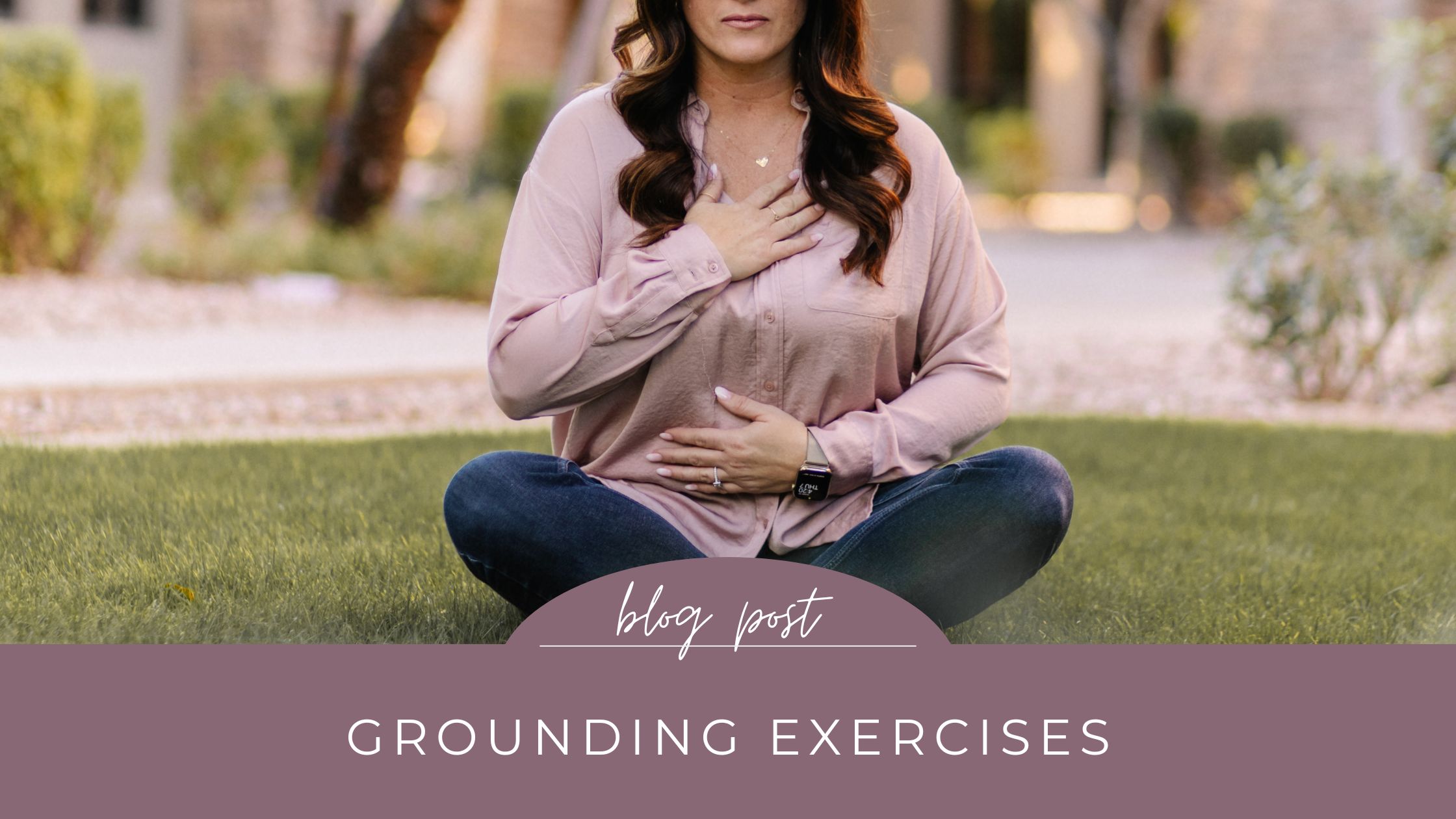What are grounding exercises? And how can they help when you are feeling dysregulated and/or disconnected?
Grounding exercises are techniques that can help regulate your nervous system and keep you in the present. They help re-orient you to the here-and-now.
Grounding skills can be helpful in managing overwhelming feelings or intense anxiety. They can help you to regain your mental focus from an intense emotional state or can help bring you back to the “here and now” when you have been stuck in a dissociative disconnected state.
I am going to discuss three types of grounding in this blog:
PHYSICAL Physical grounding helps you to focus on your body and your senses. It can be useful for dissociation, anxious feelings, or when you are feeling disconnected from your body.
MENTAL Mental grounding can help you re-focus. It can help activate your mind to cope with feelings of anxiety, distress, or discomfort while remaining present.
SOOTHING Soothing techniques help you focus your body and activate your mind to increase relaxation and feelings of safety and comfort.
Examples of Physical Grounding:
Take 5 long, deep breaths through your nose and out your mouth. Diaphragmatic breathing stimulates the vagus nerve and helps signal to the brain to lower blood pressure and decrease your heart rate bringing feelings of calm to the body.
Run cool or warm water over your hands. Touch an ice cube or an ice pack to the back of your neck or your forehead. Jump in the shower and let water run over your face. Splash cold water on your face in the sink.
Grip the arms or back of a chair tightly and slowly relax and let go. Practice Progressive Muscle Relaxation by focusing tensing and then relaxing all your muscles from the top of your head to the tip of your toes.
Touch objects around you and focus on the texture and sensation.
Stretch, focusing on the sensations it creates in your body.
Go outside and stand barefoot on the ground or sit in the grass
Lay down on the ground and let your body notice the ground beneath you
Place one hand across your chest and one hand over your belly and let yourself experience the feeling of containment
Square Breathing:
The “Square Breathing” Technique can be a helpful visual to use while practicing your diaphragmatic breathing. To begin, follow the square below with the tip of your finger while breathing in through your nose and out through your mouth.
Focus on the sensations in your body as your breath changes.
This exercise can be done with anything square: square tiles, windows, or picture frames, for example.
Physical Grounding using objects:
Grounding Objects can also be helpful when regulating. A grounding object can be ANY item around you, or one you feel connected to and carry around with you in your pocket, backpack or purse.
Hold the item in your hands or feel it with your fingertips.
What does it feel like against your hand?
What is it made of?
Describe the texture
Is it heavy or light?
Does it feel cool or warm?
By focusing on the object and how it physically feels, you are bringing your mind and your body back into the present.
Examples of Mental Grounding:
Count backwards from 100 by 3, 5, or 7.
Name all the objects around you. What colors do you see?
Describe an every day activity in detail.
Focus your mind on a safe place and focus on the details bringing in sensory experiences, how does it smell, feel, look, what can you hear when you imagine it?
Say the alphabet s…l…o..w...l…y or backwards.
Read a sentence backwards word by word.
5-4-3-2-1 Technique
Name 5 things you can see, 4 things you can touch, 3 things you can hear, 2 things you can smell and 1 thing you can taste.
These are simple little ways that can help your brain focus on something benign or relaxing long enough for your body to cue back to safety and the now.
Examples of using Soothing Grounding:
Think of your favorite animal, season, song, person, or movie.
Keep a collection of inspiring or comforting poems, song lyrics, or quotes.
Give yourself a hug and hold for 2 minutes repeating a kind phrase or a coping statement.
Smell your favorite scent, perfume, or lotion.
Write kind notes to yourself.
Make your favorite food.
Say kind things to yourself:
I am a good person.
I am strong.
I am enough.
I am doing my best.
Say coping statements to yourself:
I can handle this.
This feeling will pass.
I am safe and secure.
This won't last forever.
Remember that when we are learning and practicing something new it takes time. Practice as often as you can! Not just when you are dysregulated. Like any exercise, grounding takes practice, practice, practice.
So as you begin, set small, manageable goals. For example, focus on breathing for 1 minute instead of 10 minutes and increase when you're ready.
Most importantly do what works best for YOU. This is a guide to give you ideas on where to start but it’s important to find out what works best for you and customize it to your needs and comfort level.
Most importantly, BE KIND TO YOURSELF. And remember you don’t have to do this alone.



Comments